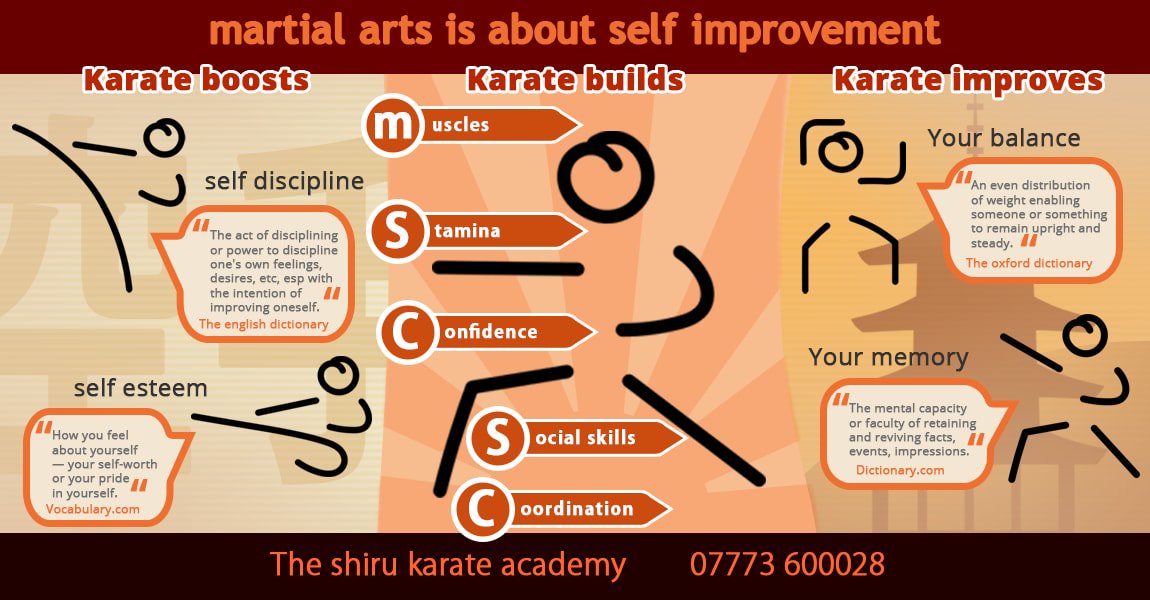The Tradition And Development Of Martial Arts: A Comprehensive Overview From Its Ancient Beginnings To Existing Techniques
The Tradition And Development Of Martial Arts: A Comprehensive Overview From Its Ancient Beginnings To Existing Techniques
Blog Article
Content Create By-Delaney Ross
Step into the world of martial arts, where ancient beginnings and modern techniques clash in an exhilarating trip of discipline and self-discovery.
As you delve into the background and evolution of this exciting art form, prepare to be mesmerized by the social influences, technical improvements, and extensive philosophy that have shaped it over centuries.
From the battlegrounds of ancient people to the training premises of today, martial arts have stood the test of time, continuously adjusting and expanding.
Each strike, each motion, lugs with it the weight of plenty of years of tradition and knowledge, gave through generations. This is a story of resilience, of warriors that looked for not just physical prowess, however additionally self-confidence and consistency.
Join us on this exceptional expedition as we discover the tricks, the legends, and the transformational power of martial arts.
Get ready to be motivated, tested, and permanently changed by the history and development of martial arts.
Cultural Impacts on Martial Arts
As you explore the history and evolution of martial arts, you'll swiftly discover the remarkable ways in which social influences have formed these combat techniques.
From the ancient worlds of China and India to the much more recent advancements in Japan and Brazil, martial arts have been heavily influenced by the cultures in which they came from.
As an example, Chinese martial arts, such as Martial Art and Tai Chi, are deeply rooted in the approach of Taoism and the idea of Yin and Yang.
On the other hand, Japanese martial arts, like Martial arts and Judo, show the samurai warrior traditions and the worths of discipline and honor.
Likewise, Brazilian fighting style, Capoeira, incorporates components of African dancing and songs, reflecting the social heritage of African servants in Brazil.
These cultural influences not just give each fighting style its unique characteristics yet also offer a deeper understanding of the historic and social contexts in which they progressed.
Technological Developments and Martial Arts
With the surge of advanced weapons and ingenious training tools, you've had the ability to enhance your abilities and adapt to the ever-changing fight landscape.
taekwondo lessons for adults have actually reinvented the means martial arts are exercised and taught. Virtual reality simulations currently enable you to train in reasonable combat scenarios without the danger of physical damage. High-speed cams capture every action, allowing you to assess and perfect your methods. Wearable tools check your heart rate, breathing, and muscle activation, providing immediate feedback on your performance.
In addition, the growth of customized equipment, such as resistance bands and agility ladders, has actually allowed you to boost your rate, strength, and agility. These technical advancements have not only made training a lot more efficient but have actually likewise pushed the boundaries of what is possible in martial arts, allowing you to get to brand-new elevations in your technique.
The Ideology and Principles of Martial Arts
The viewpoint and principles of martial arts are deeply rooted in shaping your mindset and instilling technique, emphasis, and respect in your method.
1. Attitude: Martial Arts teaches you to develop a strong and durable attitude. It enables you to get over obstacles both on and off the mat, pushing your restrictions and persevering despite hardship.
2. https://abc7news.com/san-jose-martial-arts-instructor-craniotomy-skull-removal-surgery-natasha-santana/13616262/ : Martial Arts needs technique and self-constraint. With regular training and adherence to rigorous policies and techniques, you learn to manage your impulses and establish a solid work principles.
3. Emphasis: Martial Arts requires intense focus and concentration. By educating your mind to be existing in the moment, you enhance your capacity to react rapidly and efficiently during combat circumstances.
4. Respect: Martial Arts emphasizes regard for oneself, trainers, educating partners, and opponents. It teaches you to value the abilities and experiences of others, promoting a sense of friendship and sportsmanship.
martial arts kid friendly definition on finishing your journey via the exciting globe of martial arts! Throughout this expedition, you have observed the rich background and amazing development of these fight methods.
From their ancient origins to the contemporary techniques we see today, martial arts have been shaped by social impacts.
The assimilation of technology has actually likewise played a considerable role in revolutionizing the method martial arts are instructed and exercised in the here and now day.
Nonetheless, it is important to keep in mind that martial arts are more than just physical combat. They include extensive viewpoints and guiding concepts that exceed the plain act of combating.
Take a minute to reflect on this anachronistic adventure and appreciate just how the heritage of martial arts remains to prosper in the present, transcending time and boundaries.
